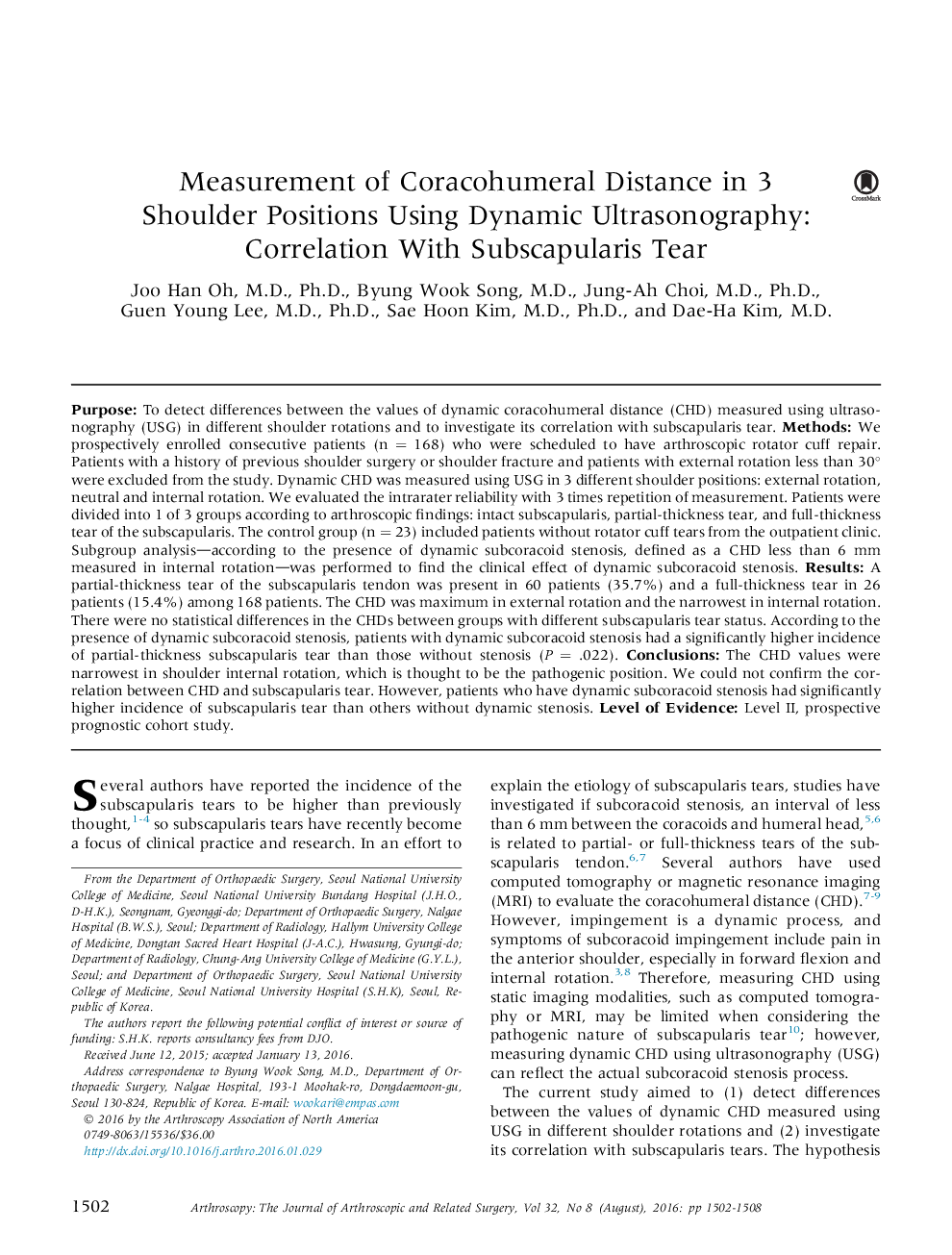| کد مقاله | کد نشریه | سال انتشار | مقاله انگلیسی | نسخه تمام متن |
|---|---|---|---|---|
| 4041781 | 1603467 | 2016 | 7 صفحه PDF | دانلود رایگان |

PurposeTo detect differences between the values of dynamic coracohumeral distance (CHD) measured using ultrasonography (USG) in different shoulder rotations and to investigate its correlation with subscapularis tear.MethodsWe prospectively enrolled consecutive patients (n = 168) who were scheduled to have arthroscopic rotator cuff repair. Patients with a history of previous shoulder surgery or shoulder fracture and patients with external rotation less than 30° were excluded from the study. Dynamic CHD was measured using USG in 3 different shoulder positions: external rotation, neutral and internal rotation. We evaluated the intrarater reliability with 3 times repetition of measurement. Patients were divided into 1 of 3 groups according to arthroscopic findings: intact subscapularis, partial-thickness tear, and full-thickness tear of the subscapularis. The control group (n = 23) included patients without rotator cuff tears from the outpatient clinic. Subgroup analysis—according to the presence of dynamic subcoracoid stenosis, defined as a CHD less than 6 mm measured in internal rotation—was performed to find the clinical effect of dynamic subcoracoid stenosis.ResultsA partial-thickness tear of the subscapularis tendon was present in 60 patients (35.7%) and a full-thickness tear in 26 patients (15.4%) among 168 patients. The CHD was maximum in external rotation and the narrowest in internal rotation. There were no statistical differences in the CHDs between groups with different subscapularis tear status. According to the presence of dynamic subcoracoid stenosis, patients with dynamic subcoracoid stenosis had a significantly higher incidence of partial-thickness subscapularis tear than those without stenosis (P = .022).ConclusionsThe CHD values were narrowest in shoulder internal rotation, which is thought to be the pathogenic position. We could not confirm the correlation between CHD and subscapularis tear. However, patients who have dynamic subcoracoid stenosis had significantly higher incidence of subscapularis tear than others without dynamic stenosis.Level of EvidenceLevel II, prospective prognostic cohort study.
Journal: Arthroscopy: The Journal of Arthroscopic & Related Surgery - Volume 32, Issue 8, August 2016, Pages 1502–1508